| Srl | Item |
| 1 |
ID:
086999
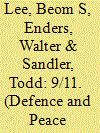

|
|
|
|
|
| Publication |
2009.
|
| Summary/Abstract |
In February 1998, Osama Bin Laden published a signed statement calling for a fatwa against the United States for its having 'declared war against God'. As we now know, the fatwa resulted in the unprecedented attack of 9/11. The issue of whether or not 9/11 was in any way predictable culminated in the public debate between Richard Clarke, former CIA Director George Tenet and the White House. This paper examines whether there was any evidence of a structural change in the terrorism data at or after February 1998 but prior to June 2001, controlling for the possibility of other breaks in earlier periods. In doing so, we use the standard Bai-Perron procedure and our sequential importance sampling (SIS) Markov Chain Monte Carlo (MCMC) method for identifying an unknown number of breaks at unknown dates. We conclude that sophisticated statistical time-series analysis would not have predicted 9/11.
|
|
|
|
|
|
|
|
|
|
|
|
|
|
|
|
| 2 |
ID:
087001
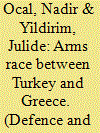

|
|
|
|
|
| Publication |
2009.
|
| Summary/Abstract |
The ongoing Turkish-Greek antagonism has triggered the interest of defense economists to investigate the various aspects of the arms race between Turkey and Greece. However, empirical studies examining the long-run relationship between the military expenditures of the two countries offer little evidence in favor of such an interaction. This paper attributes the poor results of the previous literature to the adherence to linear cointegration techniques and argues that if the adjustment towards long-run equilibrium is asymmetric, nonlinear co-integration models should be employed. Accordingly, this paper considers threshold autoregressive (TAR) and momentum threshold autoregressive (M-TAR) models as alternative adjustment processes for the cointegration relationship, following Enders and Siklos (2001). The results indicate that the relationship between the variables can be characterized by a threshold cointegration specification following an M-TAR type adjustment process.
|
|
|
|
|
|
|
|
|
|
|
|
|
|
|
|
| 3 |
ID:
087003
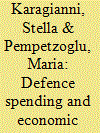

|
|
|
|
|
| Publication |
2009.
|
| Summary/Abstract |
This paper uses linear and non-linear Granger causality methods to determine the causal relationship between defense spending and economic growth in Turkey for the period 1949-2004. The innovative feature of this paper is that it provides evidence regarding the nonlinear causal dependence between military spending and economic growth in Turkey. The empirical results contribute to the empirical literature by indicating support for both linear and non-linear causality between military expenditures and economic development and they may prove useful in theoretical and empirical research by regulators and policy makers.
|
|
|
|
|
|
|
|
|
|
|
|
|
|
|
|
| 4 |
ID:
087000
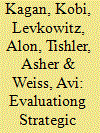

|
|
|
|
|
| Publication |
2009.
|
| Summary/Abstract |
This study evaluates the order of magnitude of the monetary cost of achieving an international strategic limitation agreement on weapons of mass destruction (WMD) in an asymmetric arms race, with applications to the Israeli-Syrian and the North versus South Korean conflicts. It extends the Kagan et al. (2005) framework and develops a model of resource allocation between expenditure on civilian government consumption and on security in a non-cooperative (Cournot) arms race between a developed country and a less-developed country. The model is used to predict the optimal mix of weapons of the two countries engaged in the arms race, and to evaluate the applicability of international strategic WMD limitation agreements. Applying the model to the arms race between Israel and Syria shows that if considered from a purely monetary perspective, such an agreement, in which the monetary transfer to Syria is made by either Israel or a third party, is within reach. A strategic agreement to limit North Korea's WMD is also economically feasible, but only when the monetary transfer to North Korea is shouldered by a third party such as the USA or a coalition of neighboring countries.
|
|
|
|
|
|
|
|
|
|
|
|
|
|
|
|
| 5 |
ID:
087002
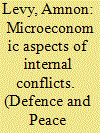

|
|
|
|
|
| Publication |
2009.
|
| Summary/Abstract |
This exploratory paper outlines the special macroeconomic features of countries populated by two groups of people engaged in internal conflict yet forming a central government for generating benefits that cannot be privately attained. Each group exerts an influence on the central government in accordance with its relative military strength. The central government collects taxes, exports the country's natural resources and tourist attractions, attracts external grants and loans, and distributes the net revenues between the rival groups. The paper highlights the implications of the groups' investment in military strength for the state's net revenues and their distribution, for the state's external debt, and for the groups' ability to maintain and increase their ranks, production capital and per capita income.
|
|
|
|
|
|
|
|
|
|
|
|
|
|
|
|